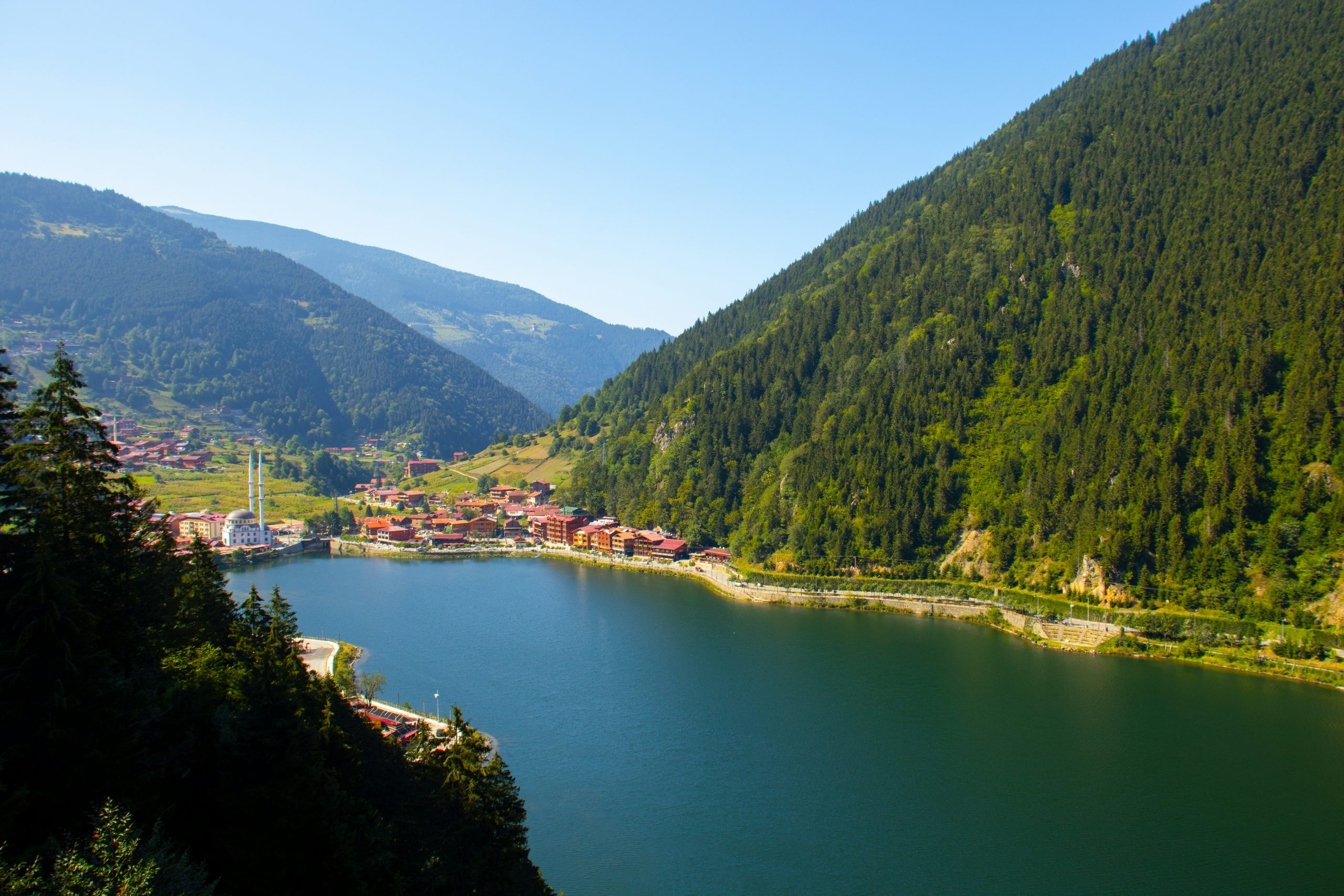Turkey Travel Guide: Best Tourist Attractions & Hidden Gems
Turkey honestly took my breath away the first time I visited—and I’m not someone who gets easily impressed by tourist destinations. Having explored over forty countries, I can confidently say that Turkey offers something genuinely unique. It’s this incredible crossroads where Europe meets Asia, where ancient history collides with modern life, and where every corner tells a story that’s been thousands of years in the making.
What struck me most during my travels across Turkey wasn’t just the obvious attractions everyone talks about. Sure, the Hagia Sophia is absolutely stunning, and Cappadocia’s hot air balloon rides are everything Instagram makes them out to be. But it’s the unexpected moments that really capture your heart—sharing tea with a shopkeeper in Istanbul’s Grand Bazaar, watching the sunrise over Pamukkale’s travertine terraces, or discovering a hidden Byzantine church tucked away in a remote valley.
Turkey at a Glance
Turkey spans two continents and covers 783,562 square kilometers, making it roughly the size of Texas. With over 8,000 kilometers of coastline along four different seas, Turkey offers an incredible diversity of landscapes, from Mediterranean beaches to Central Anatolian plateaus. The country is home to 18 UNESCO World Heritage Sites, more than most European countries.
I’ve been fortunate enough to return to Turkey multiple times over the past decade, and each visit reveals new layers of this fascinating country. The diversity is genuinely remarkable—you can start your morning exploring Roman ruins, spend your afternoon hiking through otherworldly landscapes, and end your evening dining on some of the world’s best cuisine while watching the sunset over the Bosphorus.
Let’s be honest—Turkey can feel overwhelming when you’re trying to plan your first visit. I remember staring at maps for hours, trying to figure out how to fit everything into a reasonable itinerary. The country is huge, and the attractions are spread across dramatically different regions. Should you focus on the historical sites? The natural wonders? The vibrant cities? The pristine beaches?
Here’s what I’ve learned after years of exploring Turkey: you don’t need to see everything in one trip. Actually, trying to do too much is the biggest mistake first-time visitors make. Instead, I recommend choosing 2-3 regions and really experiencing them. This approach allows you to move beyond the surface-level tourist experience and actually connect with the places you’re visiting.
The best time to visit Turkey depends entirely on what you want to experience. Spring (April-May) and fall (September-October) offer the most pleasant weather for sightseeing, with comfortable temperatures and fewer crowds. Summer brings perfect beach weather but can be intensely hot in central regions like Cappadocia. Winter? Well, that’s when you’ll find the best deals and experience Turkey like a local, though some attractions have reduced hours.
Turkey’s Must-See Tourist Attractions
Istanbul absolutely deserves its reputation as one of the world’s great cities. I’ve spent countless hours wandering through its neighborhoods, and I’m still discovering new corners that surprise me. The city genuinely feels like a living museum—you’ll find 2,000-year-old Roman cisterns beneath busy streets, Byzantine mosaics hidden in converted mosques, and Ottoman palaces that showcase the incredible wealth of past empires.
The Hagia Sophia never fails to leave me speechless. I know everyone says this, but seriously—standing inside this architectural masterpiece is a profound experience. Built as a Christian cathedral in 537 AD, later converted to a mosque, then a museum, and recently back to a mosque, it represents Turkey’s complex history in a single building. The way light filters through its massive dome creates an almost spiritual atmosphere that photographs simply can’t capture.
| Attraction | Best Time to Visit | Duration | Estimated Cost |
|---|---|---|---|
| Hagia Sophia | Early morning or late afternoon | 2-3 hours | Free |
| Topkapi Palace | Morning (opens 9 AM) | 3-4 hours | $15-20 |
| Blue Mosque | Between prayer times | 1-2 hours | Free |
| Grand Bazaar | Mid-morning | 2-3 hours | Varies |
Cappadocia is probably the most photogenic region in Turkey, and those hot air balloon photos you see on social media? They’re absolutely real, and the experience is every bit as magical as it looks. I’ll be honest though—the balloon rides are expensive (around $150-200 per person), and they’re weather-dependent. I’ve known people who visited for a week and never got to fly because of wind conditions.
Pro Tip: Cappadocia on a Budget
If the balloon rides are out of your budget, wake up early and hike to one of the viewpoints like Sunset Point or Love Valley. You’ll get incredible photos of the balloons floating overhead, and the sunrise views are absolutely free. Plus, you’ll avoid the crowds that gather later in the day.
Pamukkale—the “Cotton Castle”—is another destination that looks almost too good to be true. These white travertine terraces formed by mineral-rich hot springs create a landscape that seems straight out of a fairy tale. What many people don’t realize is that you can actually walk on these formations, though certain sections are protected to preserve their natural beauty.
The ancient city of Ephesus near Izmir is hands down the best-preserved Roman site I’ve ever visited. Walking down the marble streets, you can almost hear the echoes of ancient merchants and philosophers. The Library of Celsus is particularly stunning, but don’t miss the Great Theatre where St. Paul once preached. I recommend hiring a local guide—the stories they share bring these ancient stones to life in ways that guidebooks simply can’t match.
Antalya’s old town, known as Kaleiçi, perfectly captures Turkey’s Mediterranean charm. The narrow cobblestone streets are lined with restored Ottoman houses that now serve as boutique hotels and restaurants. The old harbor, surrounded by ancient walls, offers some of the best sunset views in the country. It’s touristy, sure, but in the best possible way.
- Istanbul: Allow at least 3-4 days to see the major sites without rushing
- Cappadocia: 2-3 days is perfect for balloon rides and valley hikes
- Pamukkale: Can be done as a day trip, but overnight allows for better photography
- Ephesus: Half-day visit combined with nearby Şirince village
- Antalya: 2-3 days for old town exploration and beach time
One thing I’ve learned about visiting Turkey’s major attractions is that timing makes all the difference. The summer months bring incredible crowds, especially to places like Cappadocia and Istanbul. If you’re flexible with your dates, visiting during shoulder seasons (late spring or early fall) offers the best balance of good weather and manageable crowds.

Hidden Gems and Cultural Experiences
Honestly, some of my most memorable Turkish experiences happened in places that didn’t make it into any guidebook. Take Amasya, for example—this stunning town in northern Turkey sits along the Yeşilırmak River, with traditional Ottoman houses reflected in the water and ancient royal tombs carved into the cliff face above. I stumbled upon it completely by accident during a road trip, and it ended up being one of my favorite discoveries.
The Ihlara Valley in Cappadocia region is another hidden gem that gets overshadowed by the more famous balloon rides. This 14-kilometer canyon contains over 100 Byzantine churches carved into the rock faces, many with incredibly well-preserved frescoes. The hiking trail follows a stream through the valley, offering shade and cool temperatures even in summer. It’s like stepping into a secret world that existed centuries ago.
Let me tell you about Turkish hospitality—it’s not just a cultural stereotype, it’s genuinely real. During my first visit to Şirince, a small village near Ephesus known for its wine production, I got lost trying to find my guesthouse. An elderly woman not only gave me directions but insisted on walking me there, then invited me to join her family for dinner. These spontaneous connections happen regularly in Turkey if you’re open to them.
Cultural Etiquette Tips
When visiting mosques, dress modestly and remove your shoes. Women should cover their heads. Don’t visit during prayer times unless you’re participating. Always ask permission before photographing people, especially in rural areas. Learning basic Turkish phrases like “Merhaba” (hello) and “Teşekkür ederim” (thank you) opens doors and hearts everywhere.
The food scene in Turkey deserves its own travel guide entirely. Forget everything you think you know about Turkish cuisine based on döner kebabs from street stalls. Real Turkish food is incredibly diverse, varying dramatically from region to region. In the Black Sea region, you’ll find dishes heavily influenced by Georgian and Russian cuisines. Along the Mediterranean coast, the food reflects Greek and Middle Eastern influences.
Istanbul’s food scene has exploded in recent years, with innovative chefs reimagining traditional dishes while respecting their roots. But some of my best meals have been in tiny family-run restaurants where the menu changes daily based on what’s fresh at the market. In Gaziantep, often called Turkey’s culinary capital, I discovered baklava variations I never knew existed and spice blends that transformed my understanding of Turkish cuisine.
- Start your day with a proper Turkish breakfast—it’s a feast of cheeses, olives, honey, and fresh bread
- Try regional specialties: Iskender kebab in Bursa, fish bread in Istanbul, pottery kebab in Cappadocia
- Don’t miss the Turkish coffee culture—it’s slow, social, and absolutely essential
- Visit local markets like the Spice Bazaar in Istanbul or the Saturday market in Kaş
- Take a cooking class—many cities offer hands-on experiences with local families
Speaking of markets, Turkish bazaars are incredible experiences if you know how to navigate them. The Grand Bazaar in Istanbul gets all the attention, but I actually prefer the Egyptian Bazaar (Spice Bazaar) for its authentic atmosphere and incredible aromas. In smaller cities, the weekly markets offer glimpses into daily Turkish life that you won’t find in tourist areas.
The Turkish bath experience—hamam—is something you absolutely must try, though I’ll warn you it’s not for the modest. These traditional bathhouses have been part of Turkish culture for centuries. The process involves lying on heated marble slabs, being scrubbed down by an attendant, and then relaxing in various temperature rooms. It’s intense, rejuvenating, and surprisingly social.
For budget travelers, Turkey offers incredible value compared to Western European destinations. You can find decent accommodation for $20-30 per night, enjoy excellent meals for $5-10, and use public transportation for just a few dollars. The key is stepping away from the most touristy areas where prices are inflated for international visitors.
Actually, let me share a money-saving tip that took me years to figure out: many of Turkey’s best attractions are free or very inexpensive. Hiking in Cappadocia’s valleys, exploring Istanbul’s neighborhoods, visiting most mosques, and enjoying the beaches along the Mediterranean coast won’t cost you anything beyond transportation.
Planning Your Turkish Adventure
After multiple trips to Turkey, I’ve learned that the biggest mistake travelers make is trying to cover too much ground in too little time. Turkey is enormous—roughly the size of Texas—and the attractions are spread across vastly different regions. My recommendation? Pick 2-3 areas and really explore them rather than racing around trying to check everything off a list.
The visa situation for Turkey is refreshingly straightforward for most visitors. Citizens of many countries can obtain an e-visa online for around $20, valid for 90 days. The process takes about 10 minutes, and you’ll receive your visa via email. Just make sure your passport is valid for at least 60 days beyond your intended stay.
Budget Planning Reality Check
Budget travelers can easily get by on $30-50 per day, including accommodation, food, and local transportation. Mid-range travelers should budget $70-100 per day, while luxury travelers can expect to spend $150+ per day. These figures exclude international flights and major shopping expenses.
Transportation within Turkey is excellent and affordable. The bus system is comprehensive and comfortable—I’ve taken overnight buses that were more comfortable than many flights. Trains are limited but scenic, particularly the route from Ankara to Kars. Domestic flights are cheap and frequent between major cities, though you’ll miss the beautiful landscapes that make overland travel so rewarding.
Safety in Turkey is generally excellent for tourists, though like anywhere, you need to use common sense. I’ve never felt unsafe walking around Istanbul at night, and Turkish people are generally helpful and protective of visitors. The current political situation doesn’t typically affect tourists, but it’s worth checking current conditions before traveling.
The language barrier is manageable, especially in tourist areas where English is widely spoken. However, learning basic Turkish phrases makes a huge difference in your experience. Turkish people genuinely appreciate when visitors make an effort to communicate in their language, and it often leads to more authentic interactions.
Sustainable travel in Turkey is becoming increasingly important as tourism grows. Choose locally-owned accommodations when possible, eat at family-run restaurants, and be mindful of your environmental impact, especially in fragile areas like Cappadocia. Some tour operators now offer eco-friendly options that support local communities while protecting natural sites.
Climate considerations are crucial for planning your trip. Summers can be brutally hot in central Turkey, while winters bring snow to much of the country. The Mediterranean and Aegean coasts have mild winters and hot summers, making them ideal for spring and fall visits. Istanbul’s climate is temperate year-round, though summers can be humid and winters occasionally see snow.
Looking back on all my travels in Turkey, what strikes me most is how the country continues to surprise me. Each visit reveals new layers of history, culture, and natural beauty that I hadn’t discovered before. Whether you’re interested in ancient civilizations, stunning landscapes, vibrant cities, or incredible cuisine, Turkey offers experiences that will stay with you long after you return home.
Turkey isn’t just a destination—it’s a journey through time, where every meal tells a story of cultural exchange, every building reflects centuries of different civilizations, and every conversation with locals reveals the warmth and complexity of Turkish society. It’s a country that rewards curious travelers who take time to look beyond the surface and connect with its rich heritage.
References


